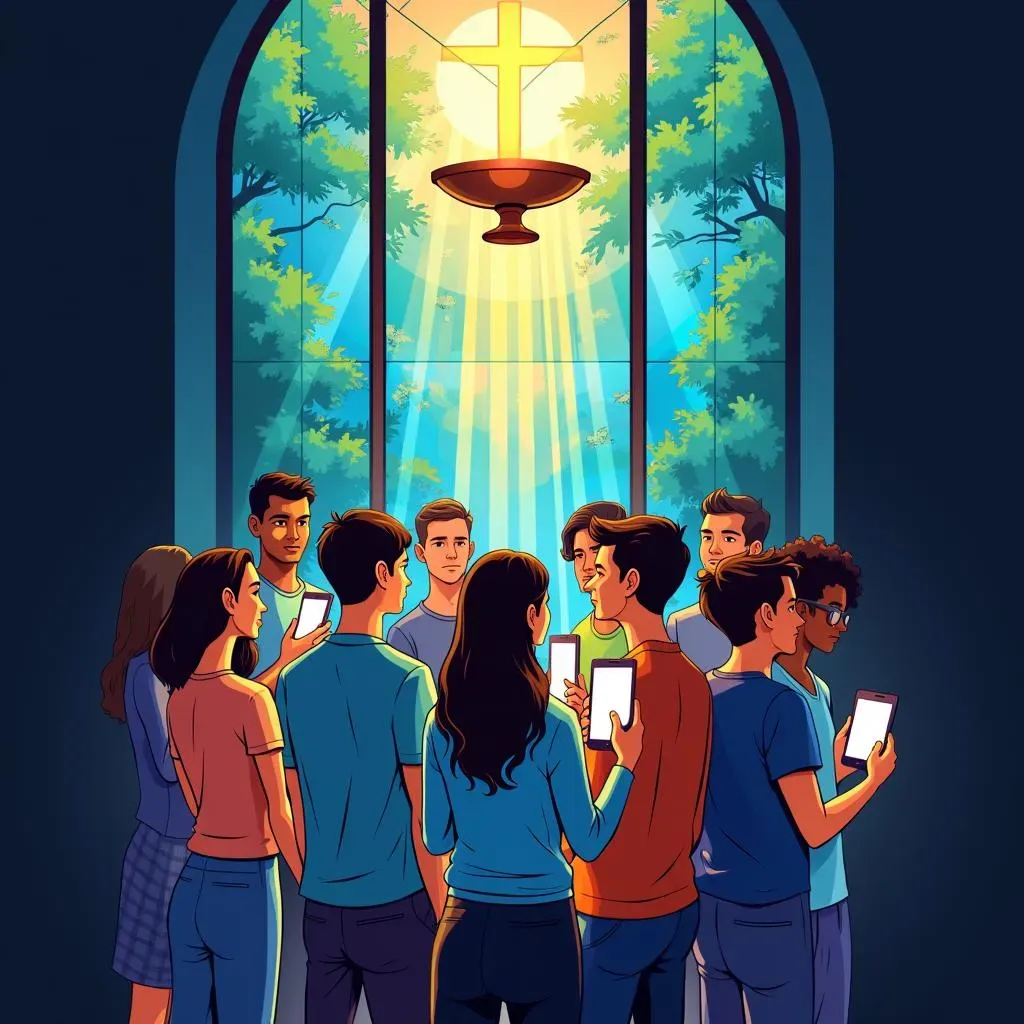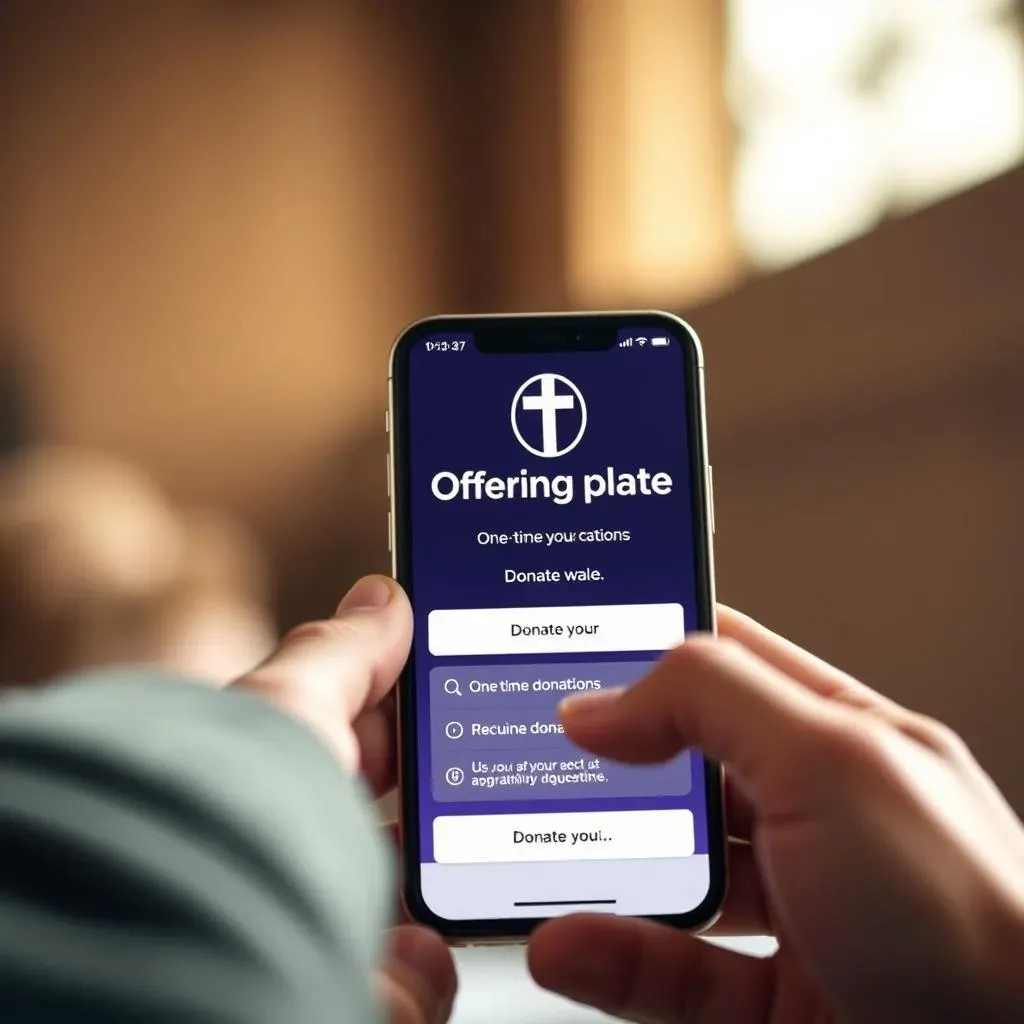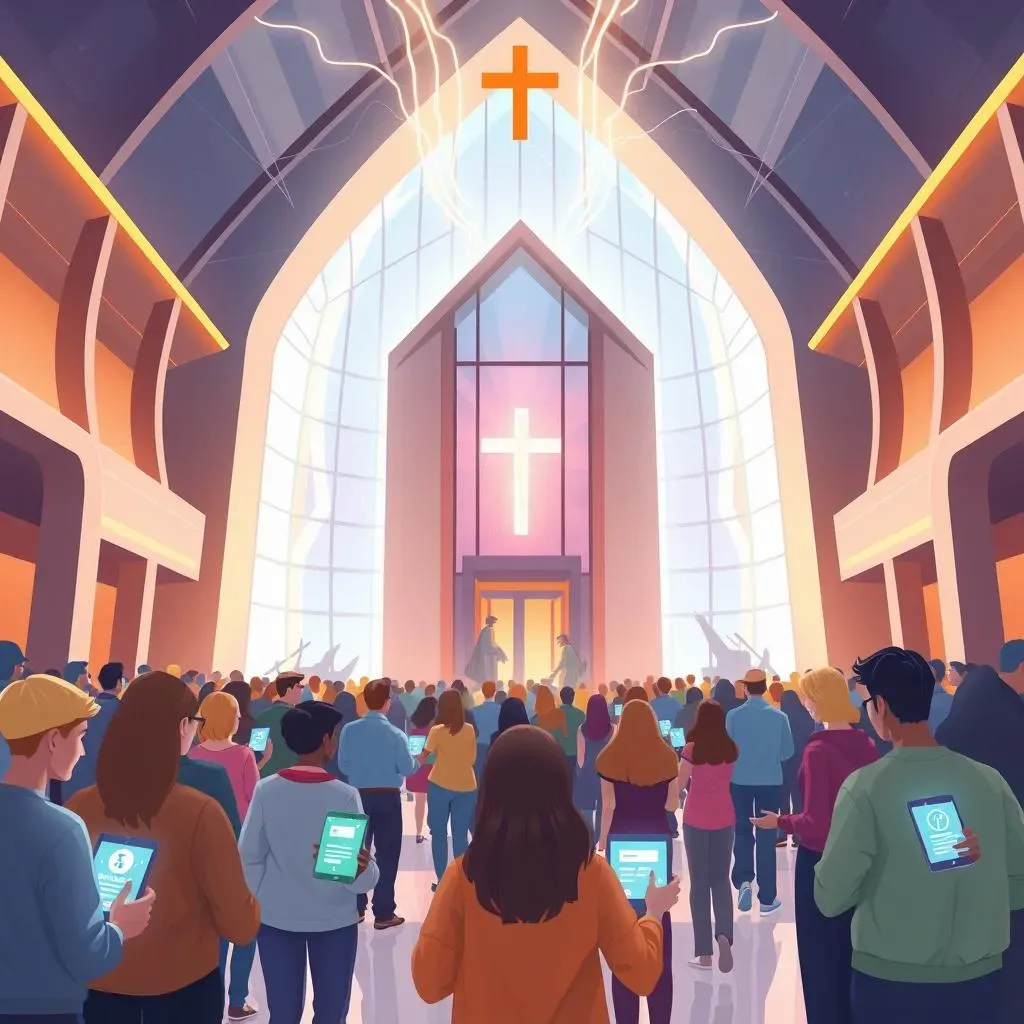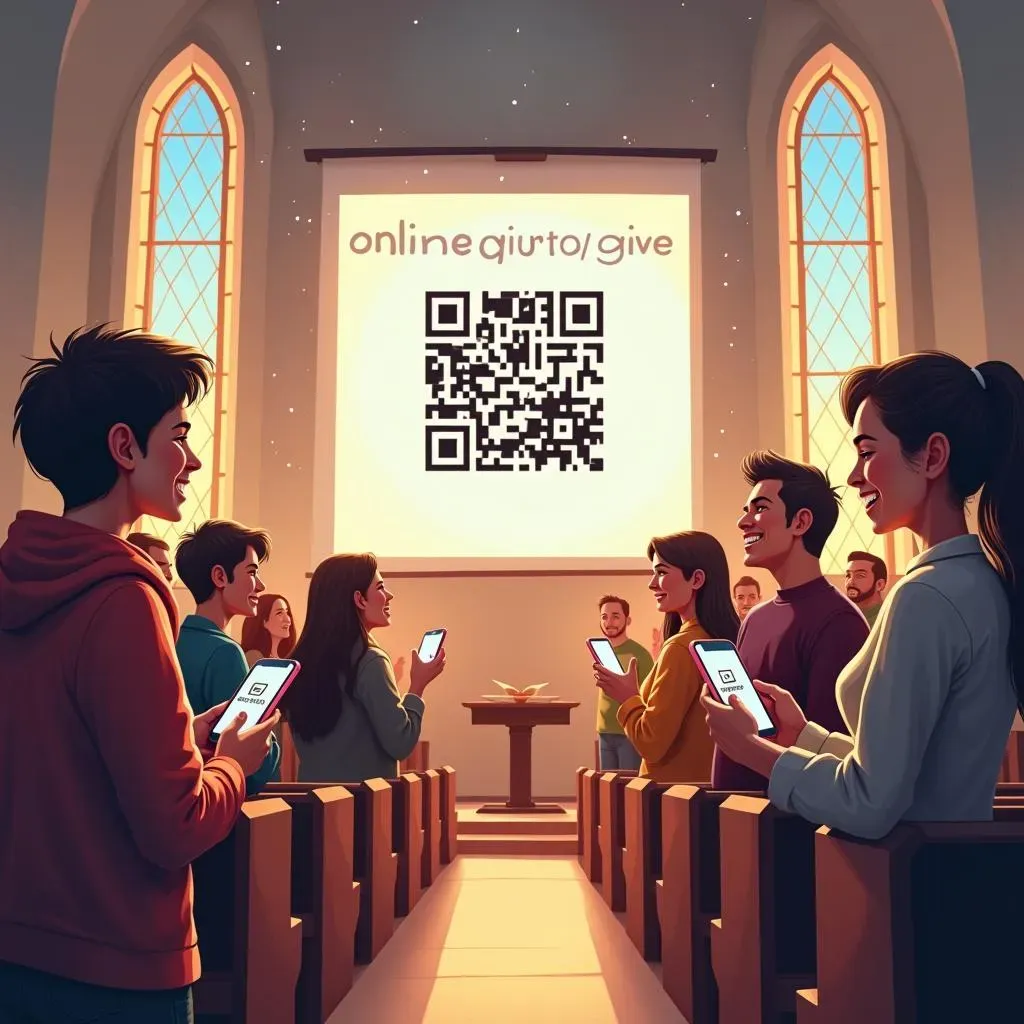Table of Contents
Let's be honest. Passing the plate still happens, but relying solely on Sunday morning cash and checks feels a bit like using a flip phone in the age of smartphones. The world moved online, and so did how people manage their money, including their generosity. If your church hasn't fully embraced digital giving, you're likely leaving significant resources on the table. This isn't about chasing trends; it's about meeting your congregation where they are and making it genuinely easy for them to support the ministry they believe in.
Why Online Giving is Essential for Churches Today

Why Online Giving is Essential for Churches Today
Look, the collection plate isn't dead, but its starring role is definitely fading. People pay bills online, buy groceries online, and yes, they give online. Ignoring this shift isn't just inconvenient for your members; it's actively hindering your ministry's ability to fund its work. Think about it: someone hears a powerful sermon or feels moved during a service, but they didn't bring cash or their checkbook. If there's no easy way to give digitally *right then*, that moment of generosity can simply evaporate. This is precisely why online giving is essential for churches today – it removes friction, captures spontaneous generosity, and provides a consistent, reliable revenue stream that doesn't depend on attendance figures or whether someone remembered their wallet.
Consider these realities:
- Most people under 40 rarely use checks.
- Many congregations are geographically dispersed; online giving connects them regardless of location.
- Digital platforms offer recurring gift options, stabilizing income.
- It provides clear records for givers and administrators.
Getting Started: Core Online Fundraising Ideas for Churches

Getting Started: Core Online Fundraising Ideas for Churches
Alright, so you're sold on the "why." Great! Now, where do you actually start with online fundraising ideas for churches? The good news is you don't need a tech degree or a massive budget. The absolute foundation, the non-negotiable starting point, is setting up a dedicated online giving page. Think of it as your church's digital offering plate, available 24/7. It needs to be easy to find, easy to use, and mobile-friendly because, let's be real, most people are probably pulling out their phone when they feel moved to give, not firing up their desktop.
What does a solid online giving setup look like?
- A dedicated page on your church website (not buried three clicks deep).
- Clear options for one-time or recurring gifts.
- Accepts major credit/debit cards and ideally ACH bank transfers (lower fees!).
- Provides instant confirmation and year-end tax statements.
- Integrates reasonably well with any church management software you use.
Beyond the Basics: Creative Online Fundraising Ideas for Churches

Beyond the Basics: Creative Online Fundraising Ideas for Churches
so you've got your online giving page humming along. That's step one, the absolute baseline. But let's talk about kicking things up a notch. Relying *only* on that passive "Donate Now" button is like having a brilliant speaker but never telling anyone they're giving a sermon. To really capture attention and inspire generosity, you need to get creative with your online fundraising ideas for churches. This means actively engaging people digitally, turning passive links into compelling reasons to give. Think about leveraging social media, email campaigns, and even virtual events to tell stories, highlight specific needs, and make giving feel like a direct part of the church's vibrant life, not just a transaction.
Making it Stick: Tips for Effective Online Fundraising Campaigns

Making it Stick: Tips for Effective Online Fundraising Campaigns
Tell a Story, Don't Just Ask for Money
you've got your online giving page set up, maybe even experimented with a few creative online fundraising ideas for churches. Now, how do you keep people engaged and giving consistently? The biggest mistake I see churches make is treating online fundraising like a digital collection plate – just putting a link out there and hoping for the best. People don't connect with links; they connect with purpose. You need to tell compelling stories about the impact their giving makes. Show them the faces of the people helped, the programs funded, the tangible difference their donation creates. Why should someone click that button *today*? Because their $50 could provide a week of meals for a local family, or help send a youth to a life-changing retreat. Specificity beats generality every time.
Think about your communication strategy. Are you sending generic emails or are you sharing heartfelt testimonials? Is your social media just announcements or are you showcasing the ministry in action? This isn't about guilt trips or emotional manipulation; it's about transparency and demonstrating faithfulness with the resources entrusted to you. People want to invest in something meaningful, something that's actually changing lives. Make it clear that their online gift isn't just dropping into a black hole; it's fueling the mission they believe in.
Consistency and Gratitude Build Trust
Building a successful online fundraising effort isn't a one-time event; it's an ongoing process that requires consistency and genuine gratitude. You can't just run a campaign for a week and then go silent for six months. Regular communication, even when you're not directly asking for funds, keeps your church's work top of mind. Share updates on projects, celebrate small victories, and show appreciation for past generosity. A simple, prompt "thank you" email after someone gives online goes a long way. Better yet, a personalized note or even a quick phone call for significant gifts can solidify that donor relationship.
Furthermore, track your results. Which online fundraising ideas for churches are working best? Which communication methods get the most engagement? Don't be afraid to experiment and analyze. Maybe email campaigns are more effective for reaching older members, while social media resonates with younger demographics. Use the data to refine your approach. And always, always, make sure the online giving process itself remains smooth and hassle-free. Technical glitches or confusing forms are sure ways to shut down generosity faster than you can say "amen."
- Key elements for effective online campaigns:
- Compelling storytelling with specific examples
- Regular, non-solicitation communication
- Prompt and sincere donor thank-yous
- Tracking and analyzing results to refine strategy
- Ensuring a seamless online giving experience
Online Fundraising Ideas for Churches: What's Next?

Online Fundraising Ideas for Churches: What's Next?
Looking Beyond the Basic Button
So you've mastered the online giving page and maybe even run a few focused campaigns. What's next for your online fundraising ideas for churches? Stagnation is the enemy of momentum. The digital landscape keeps shifting, and frankly, your congregation's habits do too. The "what's next" involves exploring integrated platforms that do more than just take a donation. Think about systems that connect giving directly to event registrations, volunteer sign-ups, or even small group participation. It’s about creating a more holistic digital ecosystem where supporting the church financially feels like a natural extension of being involved in its life. This isn't just about convenience; it's about demonstrating that every part of the ministry is connected and that financial support directly fuels that connection.
Don't get comfortable just because you have a working system. Are you exploring options like text-to-give, which is incredibly fast for quick, responsive appeals? Have you considered peer-to-peer fundraising for specific projects, empowering members to rally their networks? These aren't just fancy add-ons; they are tools that can reach different segments of your community in ways a static donate button never will. Staying relevant means being willing to test new approaches and see what resonates.
- Next steps for enhancing online giving:
- Explore integrated church management/giving platforms.
- Implement text-to-give options for quick donations.
- Consider peer-to-peer campaigns for special projects.
- Analyze data to identify untapped digital opportunities.
- Stay updated on new payment methods and platforms.
Leveraging Data and Personalization
The real power in the future of online fundraising ideas for churches lies in smart data utilization and personalization. Your online platform collects valuable information – who gives, how much, how often, and maybe even what they designate their gift for. Ignoring this data is like having a treasure map and using it as a placemat. Analyzing giving patterns can help you understand your most committed donors, identify potential major givers, and tailor your communication. Instead of sending generic appeals, you can segment your audience and speak directly to their interests or past giving history. Imagine thanking someone specifically for their contribution to the youth mission trip fund they supported last year, then sharing an update on this year's trip. That level of recognition builds loyalty.
Beyond just tracking donations, look at engagement metrics. Who is opening your emails? Who is clicking through to your giving page from social media? This information tells you what messages are working and where your digital community is most active. The future of online fundraising isn't just about having a platform; it's about using the insights that platform provides to build stronger relationships and make your appeals more effective and less like shouting into the void. It requires a shift from simply collecting money to actively cultivating digital generosity.
Moving Forward with Online Giving
So, we've covered the digital waterfront, from the essential online giving page to some more imaginative ways to tap into your community's generosity online. The reality is, simply having a donate button isn't a magic bullet. Effective online fundraising for churches requires intentionality, clear communication, and a willingness to adapt. It's not just about collecting money; it's about facilitating generosity in a way that aligns with modern life. Implementing these ideas might require some effort, maybe even a little trial and error. But ignoring the shift to digital isn't a viable long-term strategy for any ministry looking to sustain and grow its impact. Pick a few ideas, start small, and see what resonates with your people. The potential to expand your reach and resources is significant, provided you're willing to navigate the digital river.
